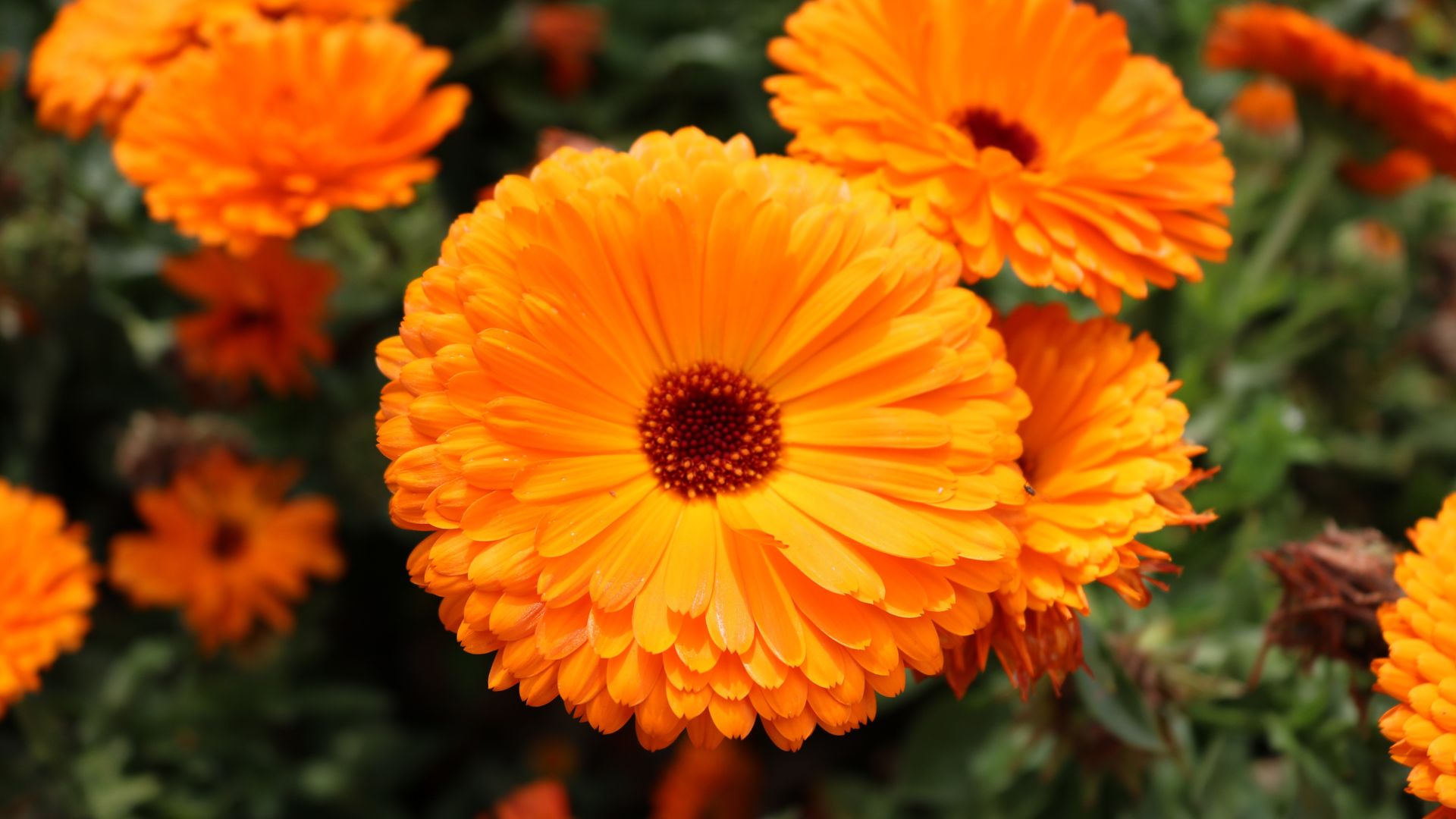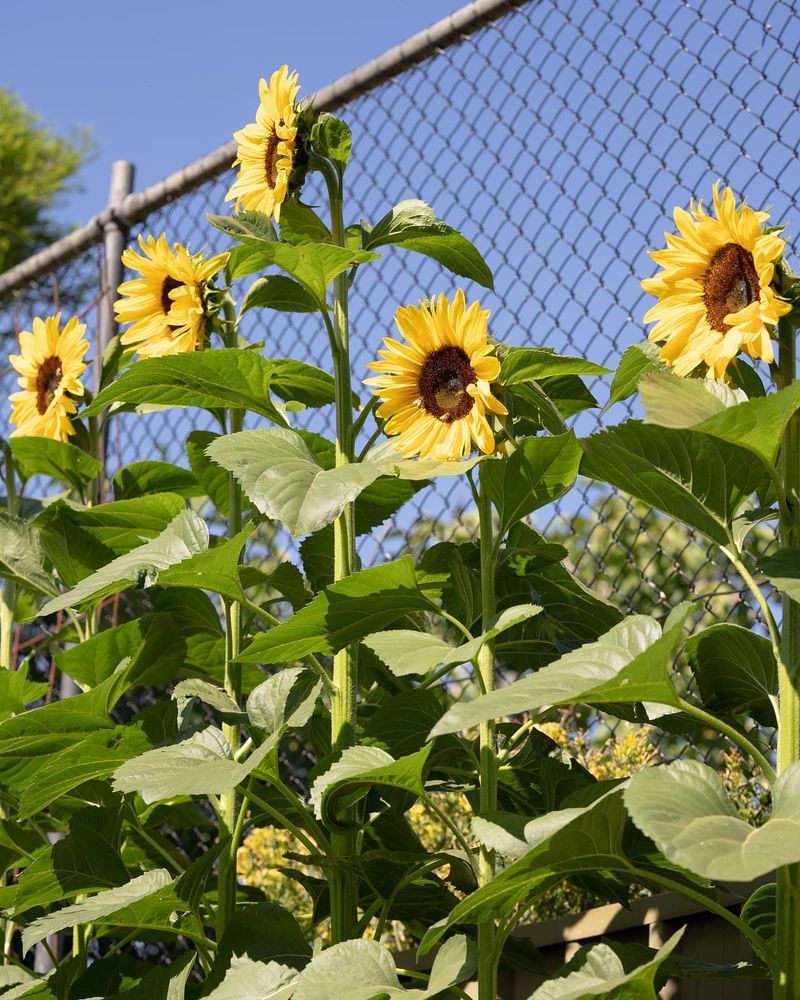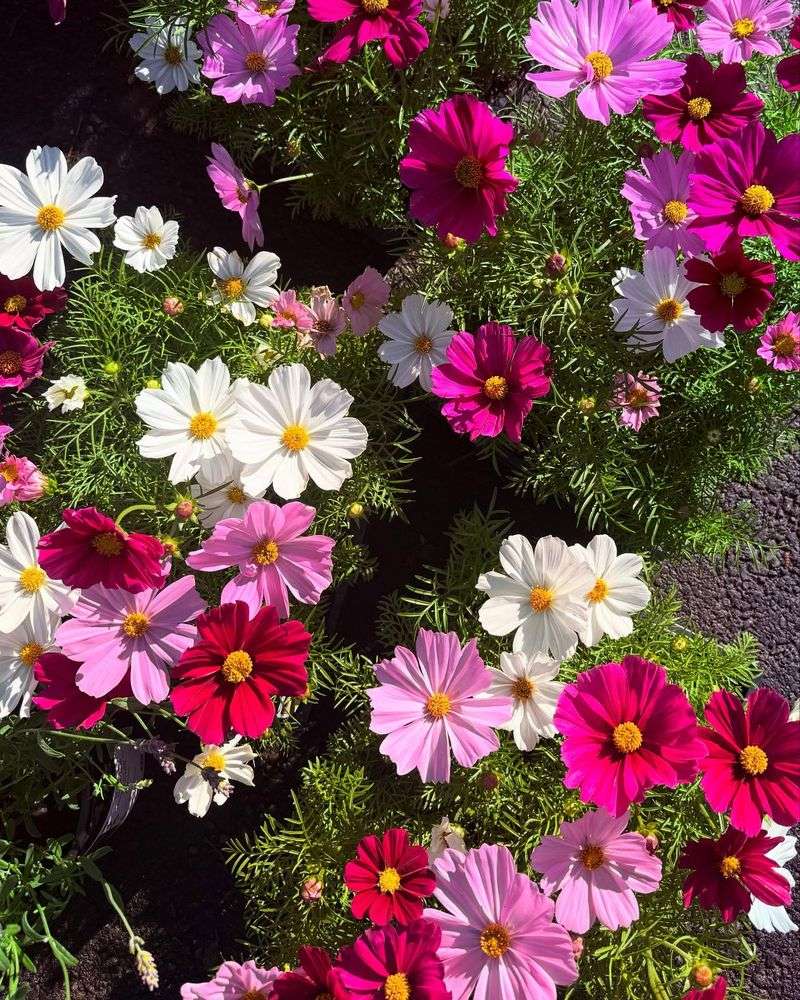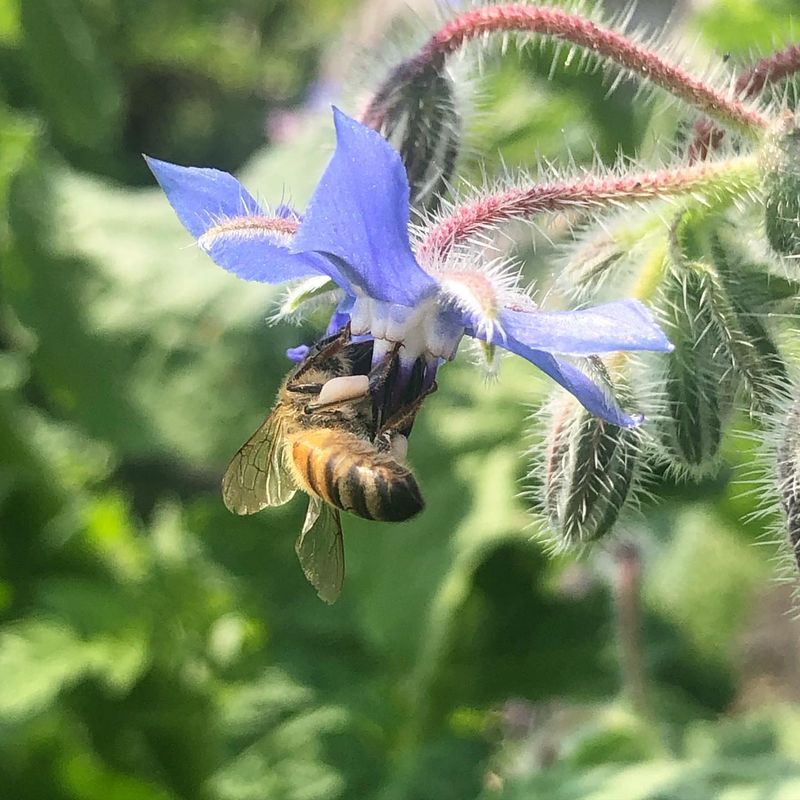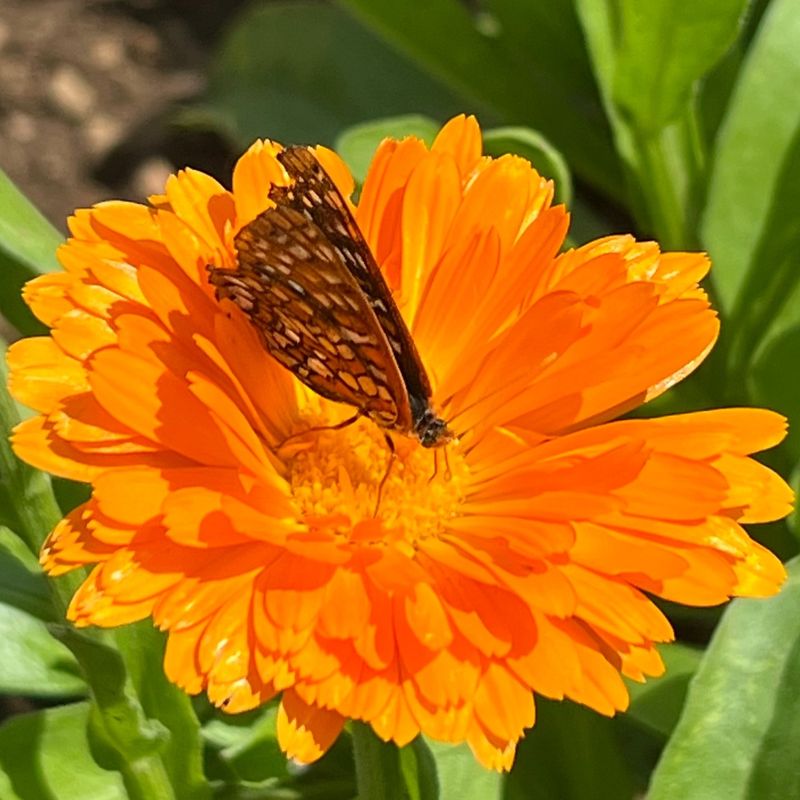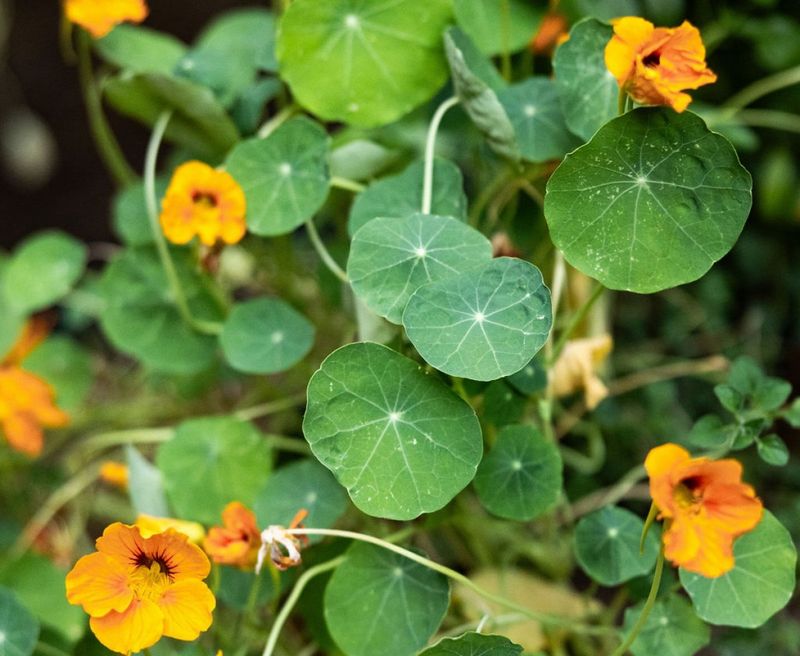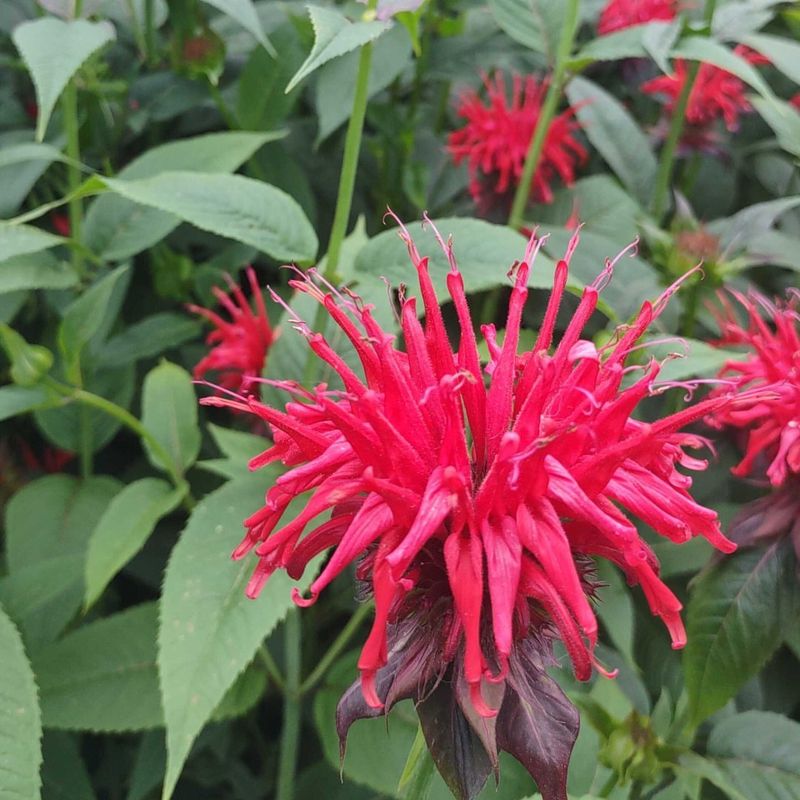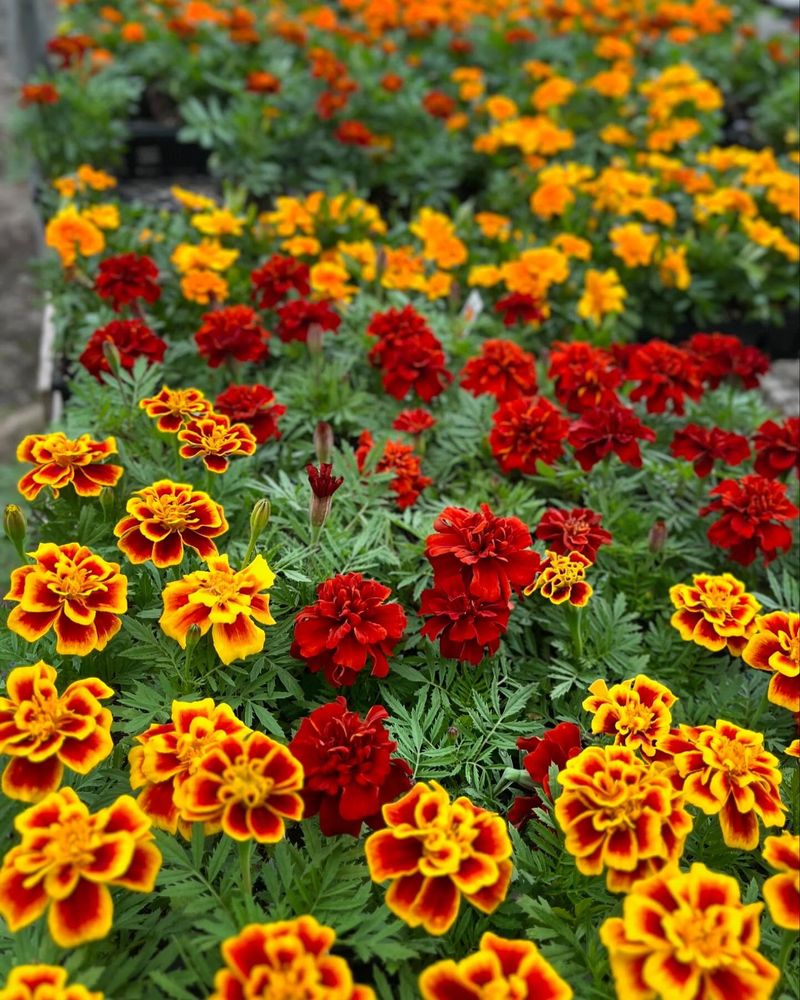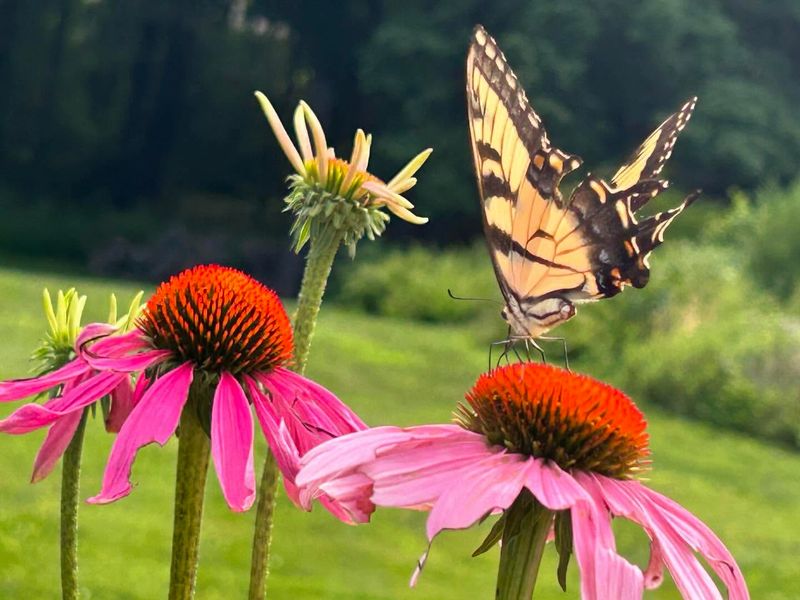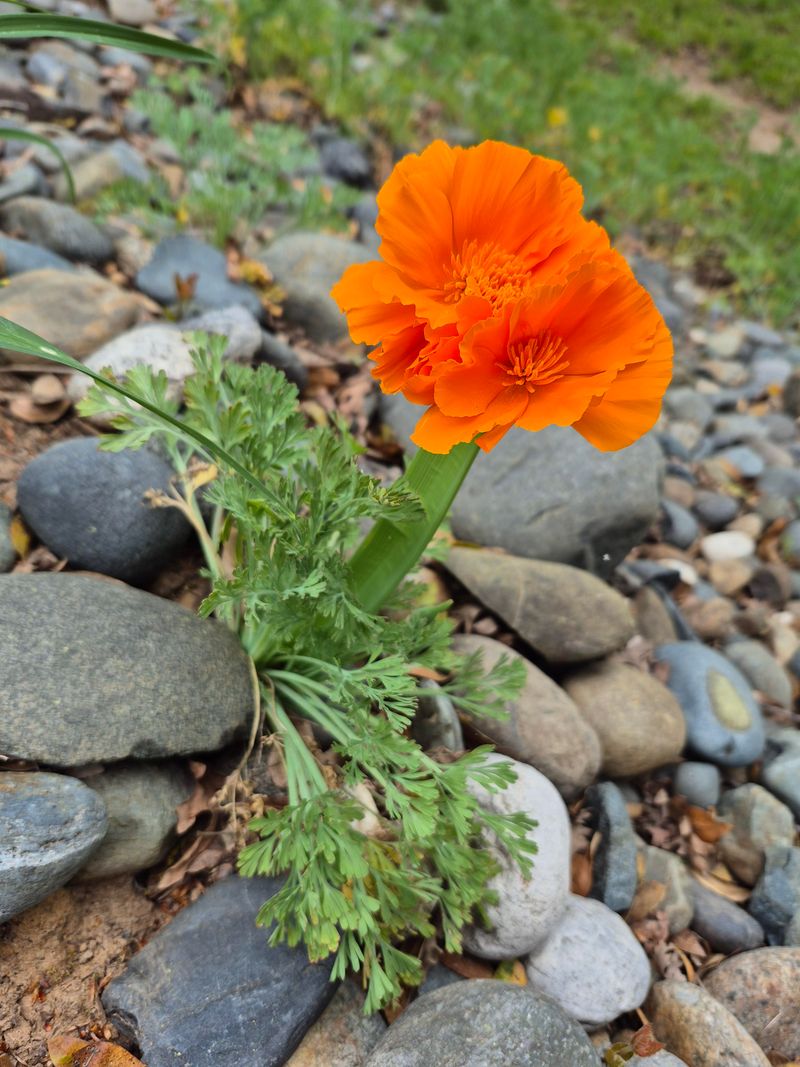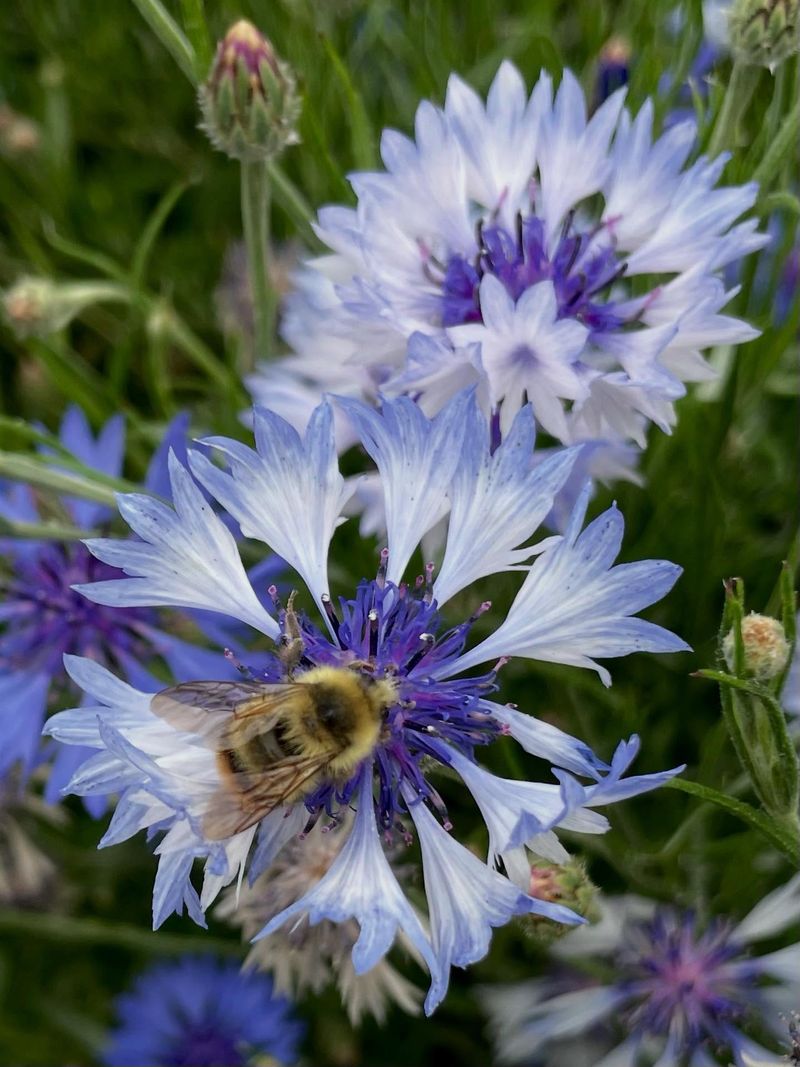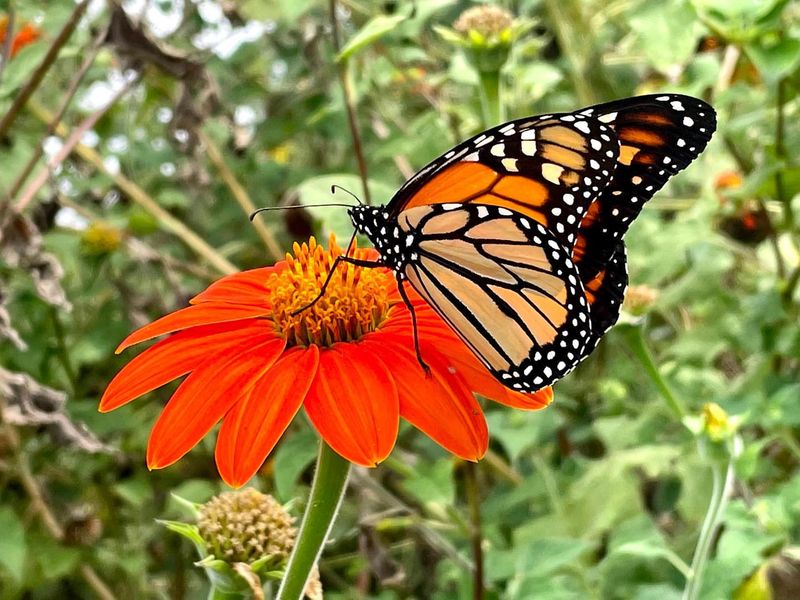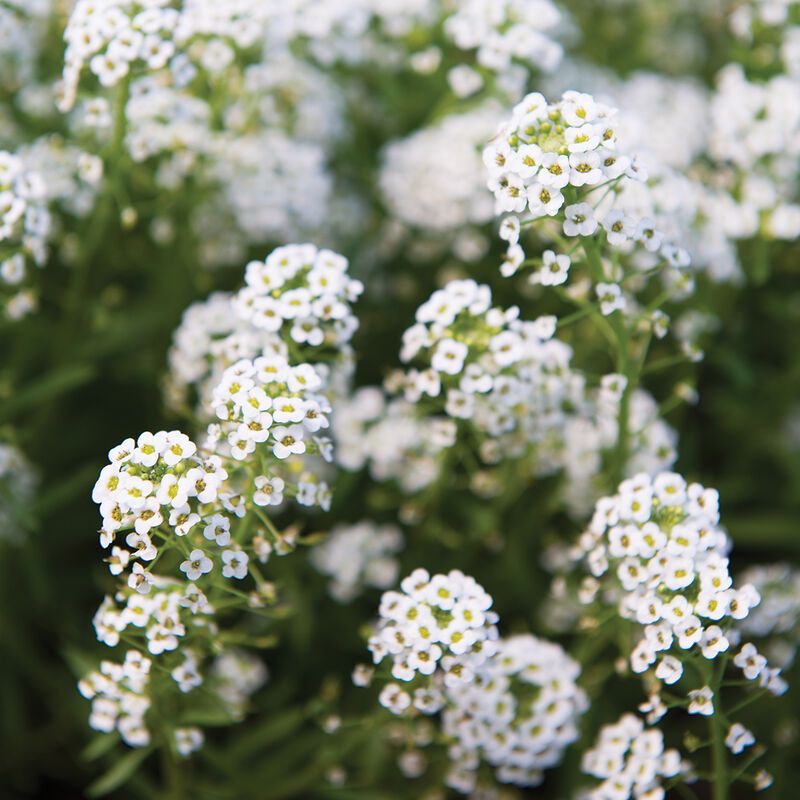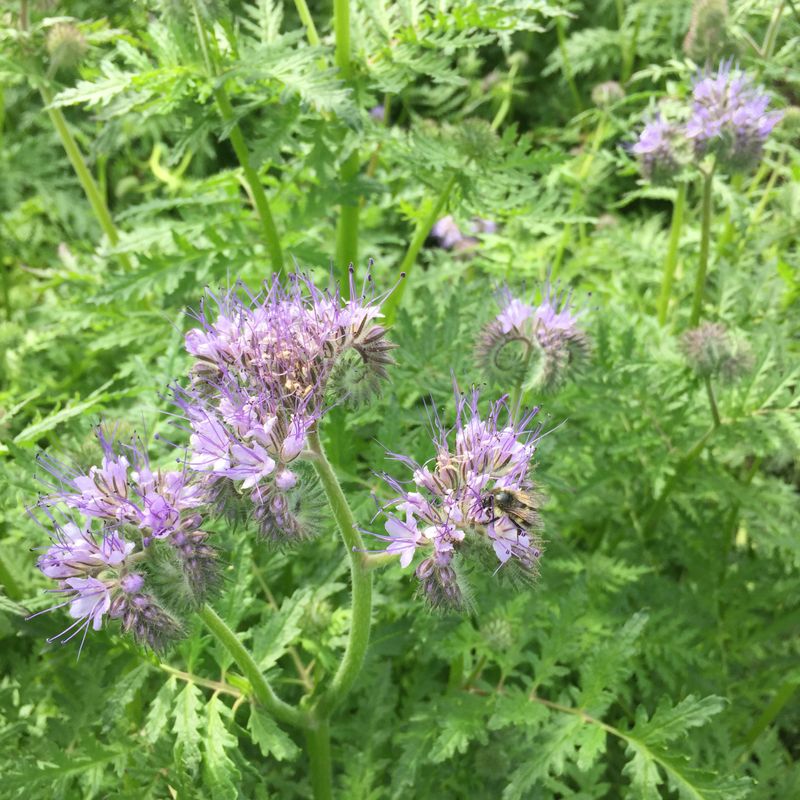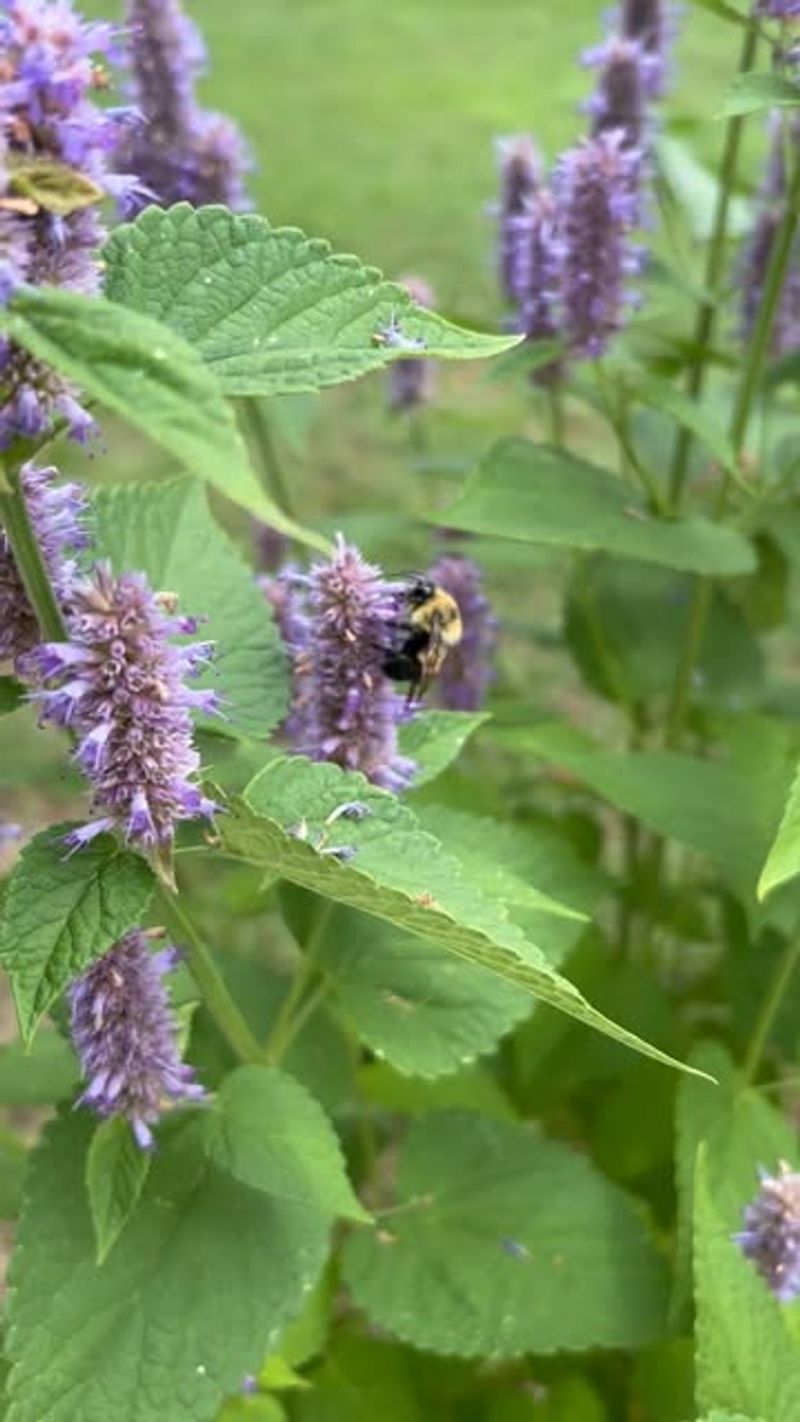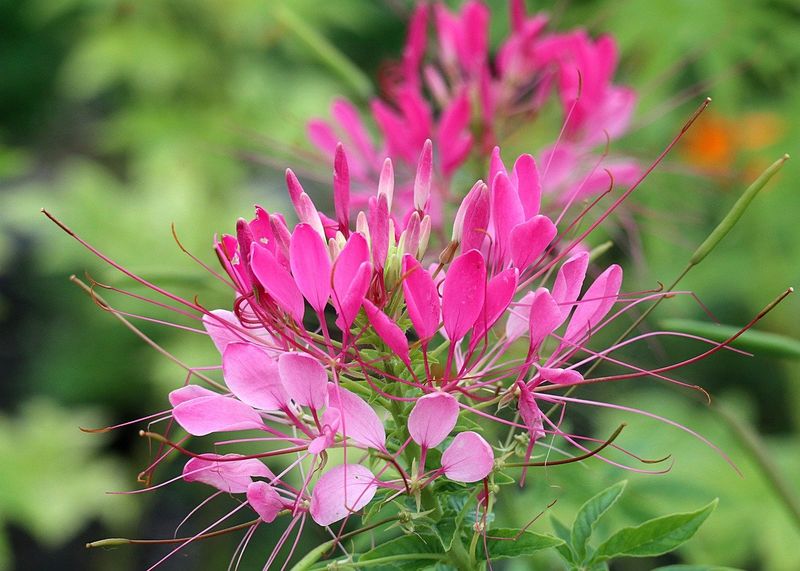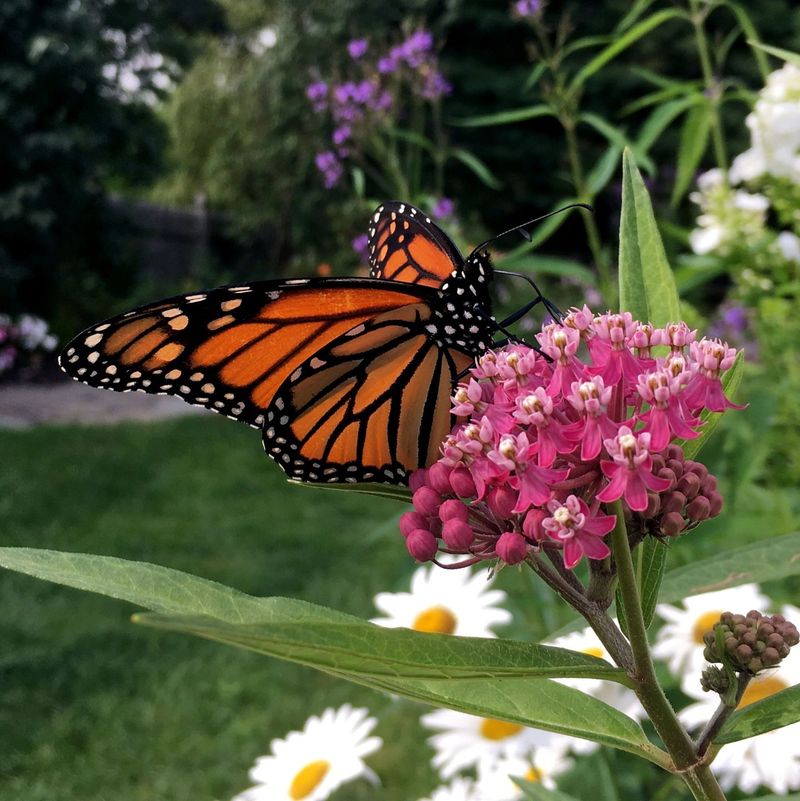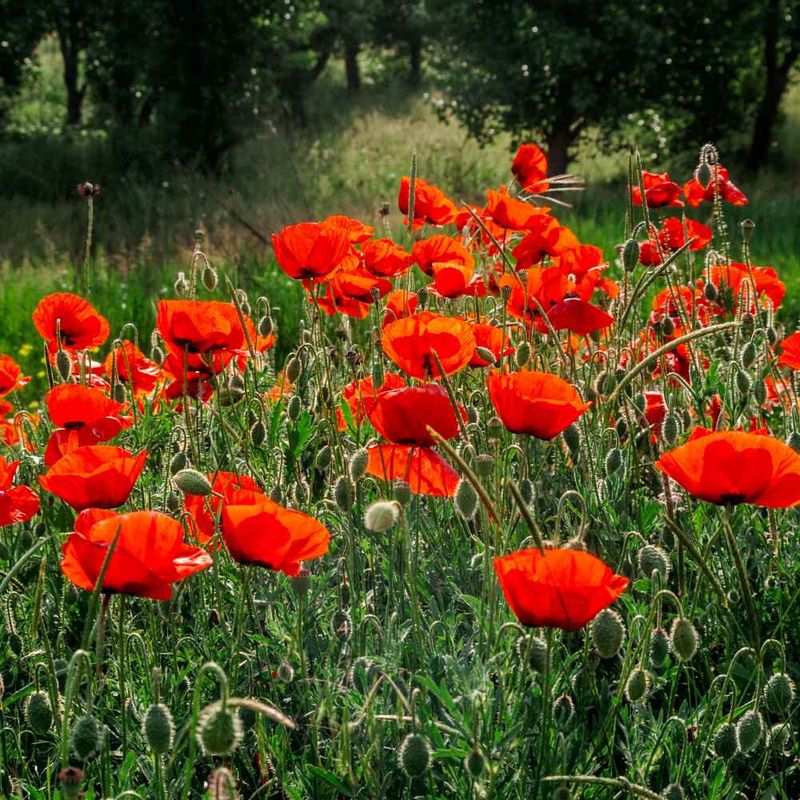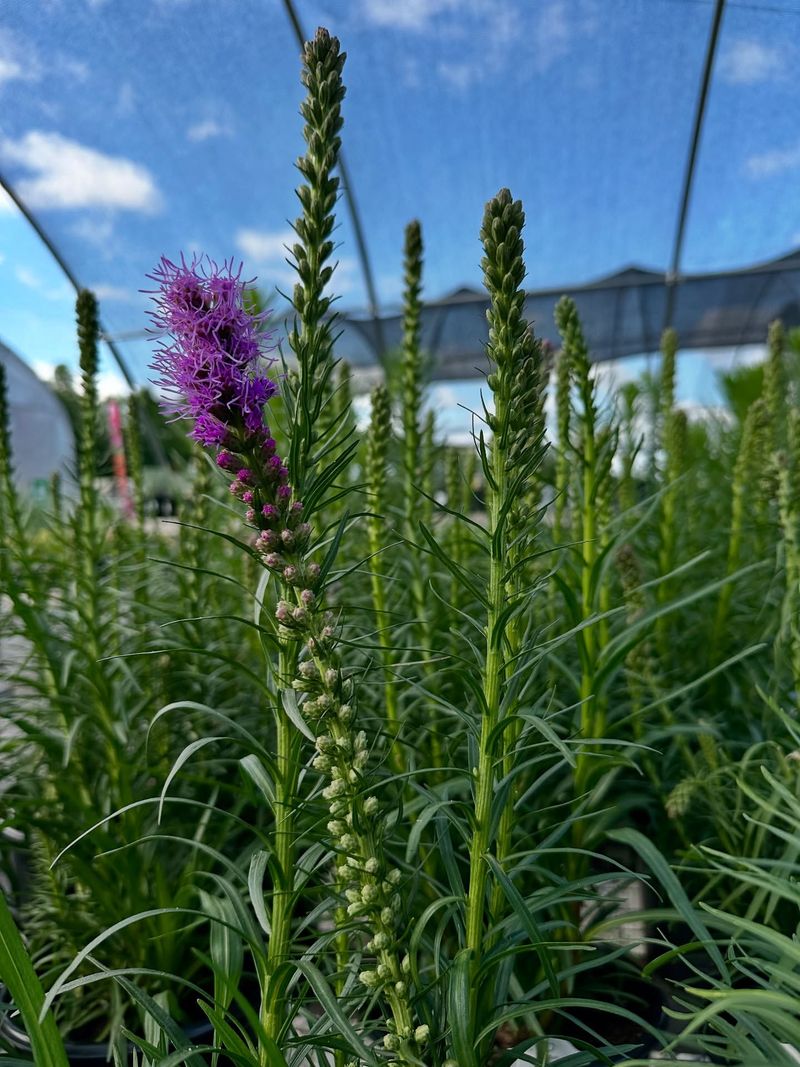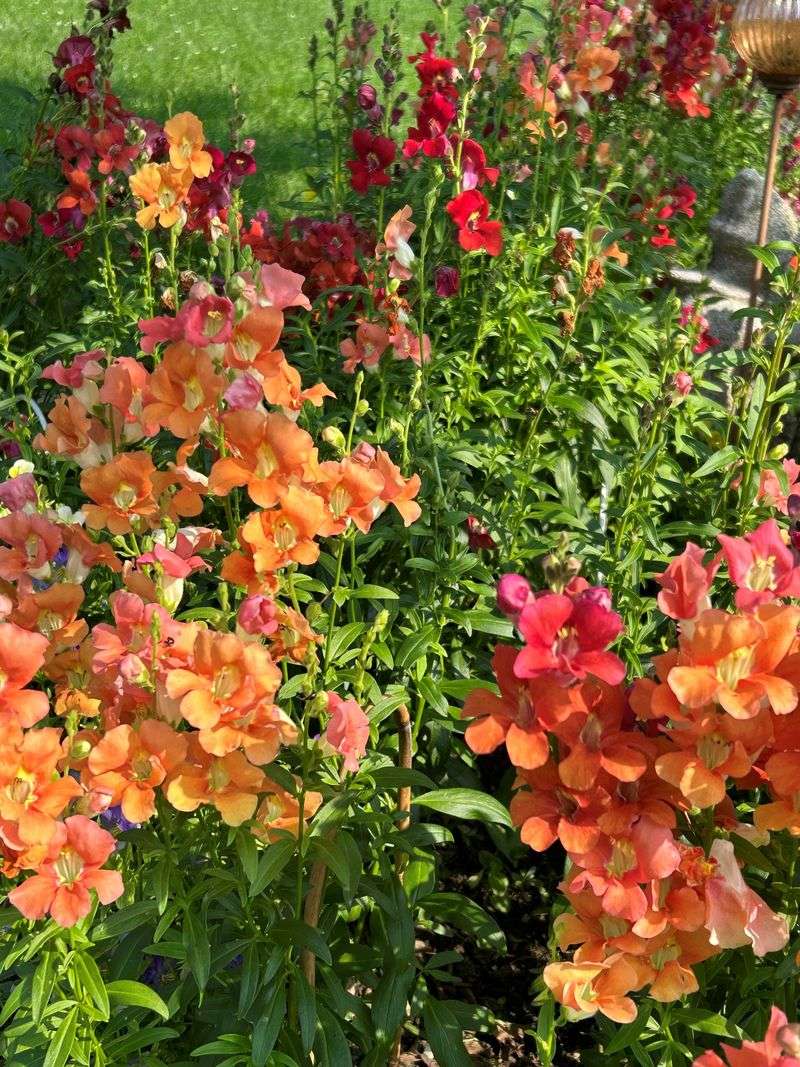You don’t need a huge budget to create a garden that’s alive with color, movement, and the gentle hum of pollinators. With just a bit of planning, even a small yard can become a buzzing retreat for bees, butterflies, and hummingbirds.
I’ve found that some of the best pollinator-friendly flowers are also the easiest (and cheapest) to grow. Many bloom beautifully with minimal effort, and most let you save seeds for next year—no fancy garden center trips required.
These flower favorites have brought life and joy to my own garden season after season. If you’re looking to boost your garden’s pollinator appeal while staying on budget, these are a great place to start.
1. Sunflowers: The Towering Pollinator Magnets
Nothing beats sunflowers for sheer pollinator appeal. Bees absolutely swarm to these sunny giants, while birds feast on their seeds later in the season.
I’ve found that one packet provides dozens of plants, and you can easily collect hundreds of seeds from a single flower head in fall. Their large seeds make them perfect for beginner seed-savers.
Plant them along fences or as a natural privacy screen, giving pollinators a high-rise habitat that doubles as a dramatic backdrop for smaller garden flowers.
2. Zinnias: Colorful Workhorses That Keep Blooming
Zinnias rank among the most rewarding flowers for pollinator gardens. Their daisy-like blooms come in every color imaginable and continue flowering from early summer until frost with regular deadheading.
Starting these from seed couldn’t be simpler – just press seeds into warm soil and watch them sprout within days. Butterflies particularly favor their flat landing pads and abundant nectar.
For me, zinnias were gateway flowers to seed saving – simply let a few blooms dry on the plant, then collect the distinctive arrow-shaped seeds for next year’s garden.
3. Cosmos: Airy Dancers That Self-Sow Freely
Cosmos create an ethereal effect with their ferny foliage and delicate blooms that sway in the slightest breeze. Bees and butterflies flock to these easy-care annuals from midsummer through fall.
The beauty of cosmos lies in their self-seeding habit – plant them once, and you’ll have volunteers popping up for years. Their seeds remain viable for several seasons when stored properly.
My garden bed started with a single $2 seed packet three years ago and now fills a 10-foot border with pink, white and magenta blooms that return reliably each summer.
4. Borage: The Cucumber-Flavored Bee Magnet
Borage sports clusters of hanging star-shaped blue flowers that honey bees simply cannot resist. The cucumber-flavored leaves and flowers are even edible, making this herb a dual-purpose addition to any garden.
Scatter seeds directly in the garden after frost danger passes – they germinate quickly and grow into bushy plants covered in bristly hairs and nodding blooms.
Once established in my garden, borage reliably returns each year from dropped seeds. Its prolific self-seeding means one packet provides years of flowering, making it exceptionally budget-friendly.
5. Calendula: Medicinal Marigolds With Ancient Roots
Calendula’s cheerful orange and yellow blooms start early in spring and continue until winter frost. Beyond attracting bees, these edible flowers have medicinal properties for skin healing.
Growing calendula from seed takes minimal effort – simply press seeds into soil in early spring or fall. Each plant produces dozens of unusual curved seeds that resemble tiny caterpillars.
The first calendulas in my garden came from a neighbor’s seed swap, and I’ve been collecting their abundant seeds ever since. They’re cold-tolerant enough to bloom nearly year-round in milder climates.
6. Nasturtiums: Spicy Treats For Hummingbirds
Nasturtiums offer a triple threat: stunning flowers, edible leaves with a peppery kick, and visual drama from their lily pad-like foliage. Hummingbirds dart to their nectar-filled spurs throughout summer.
The large, wrinkly seeds look like tiny brains and germinate easily when soaked overnight before planting. Both climbing and bush varieties produce abundant blooms in jewel tones.
Saving nasturtium seeds became a family activity in our house – my kids love collecting the distinctive seeds as they drop. One packet yields dozens of plants that scramble across garden beds or cascade from containers.
7. Bee Balm: Native Mint Family Showstopper
Bee balm erupts in crown-like whorls of scarlet, purple, or pink flowers that draw hummingbirds from surprising distances. As a native plant in the mint family, it offers ecological benefits beyond its ornamental appeal.
Starting from seed requires cold stratification – mix seeds with damp sand in a baggie and refrigerate for a month before planting. The effort pays off with years of reliable blooms.
A gardening friend gifted me three tiny seedlings years ago, and they’ve multiplied into dozens through both seeds and root division. Now I’m the one sharing divisions with neighbors each spring.
8. Marigolds: Pest-Repelling Pollinator Favorites
Marigolds pull double duty in the garden – their pungent scent deters certain pests while their bright pom-pom blooms attract beneficial insects. Bees especially favor the single-flowered varieties with accessible centers.
French and signet types make superior choices for pollinators compared to heavily doubled varieties. Their seeds develop in straight pods that dry right on the plant, making collection straightforward.
My grandmother taught me to save marigold seeds when I was just six years old. The tradition continues in my garden today, where I haven’t purchased marigold seeds in over a decade.
9. Coneflowers: Drought-Tough Prairie Natives
Coneflowers stand tall through summer heat with their distinctive raised centers and swept-back petals. These prairie natives support the entire pollinator lifecycle – nectar for butterflies and seeds for goldfinches.
Growing from seed requires patience as they may not bloom until their second year. The investment pays lifelong dividends since these perennials return reliably for decades.
Seed heads can be left standing through winter, providing food for birds and winter interest. I’ve expanded my original three plants into a magnificent drift by collecting and sowing the abundant black seeds each fall.
10. California Poppies: Golden Drought Warriors
California poppies unfurl silky golden cups each morning that bees can’t resist. Their feathery blue-green foliage remains attractive even when not in bloom, and they thrive in poor soil where other flowers struggle.
Sow seeds directly where you want them to grow – they resent transplanting but self-sow enthusiastically once established. Each plant produces several pointed seed pods that audibly pop when ripe.
During our region’s summer drought last year, these resilient flowers continued blooming without supplemental water while other plants wilted. Their deep taproots mine moisture from surprising depths.
11. Bachelor’s Buttons: Cottage Garden Classics
Bachelor’s buttons produce frilly blooms in true-blue shades that few garden flowers can match. Their papery texture and extended vase life make them excellent for cutting gardens alongside their pollinator benefits.
Direct sow in fall or early spring for the strongest plants. Each flower produces dozens of slim black seeds that separate easily from their chaff when fully dry.
A handful of seeds scattered in my garden’s sunny corner has naturalized into a self-sustaining patch that requires zero maintenance. Bees particularly favor the blue varieties over pink or white forms.
12. Mexican Sunflower: Butterfly Banquet Tables
Mexican sunflowers burst with fiery orange blooms that act like butterfly magnets, especially for monarchs. Despite their exotic appearance, these annuals grow effortlessly from seed in warm weather.
Unlike their namesake cousins, these plants branch naturally into bushy forms covered with velvety leaves. Each flower head produces black seeds similar to traditional sunflowers but smaller.
Last summer, I counted seven different butterfly species visiting my Mexican sunflower patch simultaneously. Their heat tolerance makes them reliable performers during August when many other flowers have faded.
13. Sweet Alyssum: Honey-Scented Ground Cover
Sweet alyssum creates frothy carpets of tiny blooms that emit a honey-like fragrance, attracting countless small pollinators and beneficial insects. Its low-growing habit makes it perfect for garden edges and container spill-overs.
Scatter the dust-like seeds on soil surface without covering – they need light to germinate. Modern varieties rebloom through summer heat, unlike older types that faded in warm weather.
A single packet yielded enough plants to edge my entire vegetable garden, creating habitat for beneficial insects that helped control aphids on nearby crops. Its self-seeding habit ensures returns year after year.
14. Phacelia: The Secret Pollinator Superstar
Phacelia unfurls fascinating fiddlehead-like flower clusters that gradually open into lavender blooms irresistible to bees. Though less common in home gardens, this California native outperforms many popular flowers in pollinator attraction studies.
Farmers use phacelia as cover crops to build soil and support beneficial insects. Its quick growth from seed to bloom makes it perfect for filling garden gaps.
After discovering phacelia at a community garden, I’ve incorporated it as a companion plant throughout my vegetable beds. One inexpensive seed packet provides hundreds of plants that flower within weeks of germination.
15. Anise Hyssop: Licorice-Scented Pollinator Buffet
Anise hyssop sends up spikes of tiny purple flowers that bloom for months, creating a continuous nectar source from summer through fall. Its licorice-scented leaves make delightful herbal tea while supporting dozens of pollinator species.
Growing from seed requires only basic stratification – mix with damp sand and refrigerate for two weeks before sowing. These perennials return reliably for years while also self-seeding moderately.
Watching the diversity of insects on my anise hyssop patch has become a summer ritual – from tiny native bees to swallowtail butterflies, the blooms host a constantly changing pollinator parade throughout the day.
16. Cleome: Spider Flowers That Self-Sow Generously
Cleome creates dramatic sprays of spidery blooms atop tall stems that sway gracefully in summer breezes. Hummingbirds dart between the unusual flowers while bees work steadily through the prominent stamens.
Scatter the fine seeds on soil surface in spring after frost danger passes. Their unusual seed pods resemble green beans that gradually dry and split, distributing seeds for next year’s plants.
My grandmother’s garden featured cleome borders, and now mine does too – all from a single packet purchased years ago. The volunteer seedlings can be easily moved while small to create intentional drifts.
17. Milkweed: Monarch Butterfly Nurseries
Milkweed serves as the exclusive host plant for monarch butterfly caterpillars while providing nectar for countless other pollinators. The native varieties offer specialized ecological benefits beyond ornamental appeal.
Seeds require cold stratification – store in damp paper towels in the refrigerator for 30 days before planting. The distinctive seed pods contain hundreds of seeds attached to silky parachutes for wind dispersal.
Starting my first milkweed patch felt like an act of conservation. Watching monarchs lay eggs on plants grown from seeds I collected gives gardening deeper purpose beyond mere decoration.
18. Poppies: Ephemeral Beauties For Early Pollinators
Poppies unfurl tissue-paper blooms in spring when many pollinators desperately need early food sources. Their distinctive seed pods function like salt shakers, containing hundreds of tiny seeds that can be easily collected.
Fall sowing produces the strongest plants – simply scatter seeds on bare soil before winter. The Breadseed and Shirley varieties offer superior pollen compared to highly doubled types.
My garden’s poppy display started with a teaspoon of seeds shared by a neighbor. The ephemeral blooms last just days individually, but the plants produce waves of flowers for weeks, feeding early-emerging bees.
19. Blazing Star: Vertical Accents That Butterflies Adore
Blazing star sends up dramatic purple spikes that butterflies flock to throughout late summer. Native to North American prairies, these perennials thrive in challenging conditions where fussier plants fail.
Seeds benefit from cold stratification but germinate reliably with basic care. Each fluffy seed head contains dozens of seeds attached to feathery parachutes similar to dandelions.
A garden center clearance rack yielded three sad-looking blazing star plants that have since multiplied into a magnificent stand. Their vertical form provides crucial structural diversity in pollinator plantings dominated by daisy-shaped flowers.
20. Snapdragons: Early Season Hummingbird Magnets
Snapdragons produce spikes of uniquely hinged flowers that specialized bees pry open to access nectar. Hummingbirds particularly favor the tubular blooms during spring when few other nectar sources exist.
Start seeds indoors 8-10 weeks before last frost – they’re slow to germinate but worth the wait. The dust-like seeds pour from dried flower capsules that resemble tiny skulls when mature.
During an unexpected April cold snap, my snapdragons continued blooming while other flowers collapsed, providing crucial nectar for early hummingbirds. The tallest varieties make excellent cut flowers alongside their pollinator benefits.

